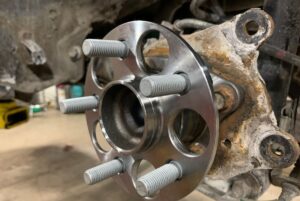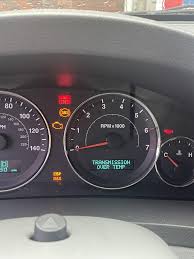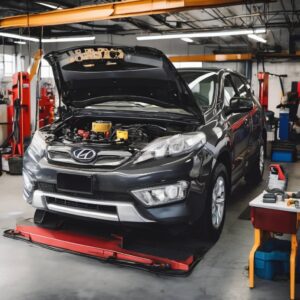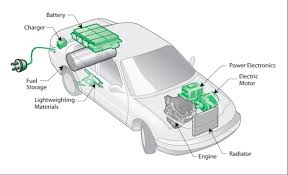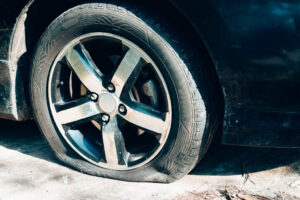Why Is My Steering Wheel Crooked and How to Fix It
Have you ever been driving down the road and noticed that your steering wheel isn’t quite straight, even when your car is moving forward? A crooked steering wheel can be unsettling and may indicate underlying problems with your vehicle. In this blog post, we’ll explore the reasons why your steering wheel might be crooked and what you can do to fix it.
Common Reasons for a Crooked Steering Wheel
A steering wheel that isn’t aligned properly can be caused by a variety of issues, ranging from something as simple as hitting a pothole to more serious alignment problems. Here are some of the most common reasons:
1. Misaligned Wheels
The most likely reason your steering wheel is crooked is that your wheels are out of alignment. Over time, daily driving, hitting bumps, curbs, or potholes can cause your wheels to shift out of their proper position. When your wheels are misaligned, the steering wheel compensates by tilting to one side, even when you’re driving straight.
2. Suspension Issues
If your vehicle’s suspension components (such as control arms, bushings, or ball joints) are damaged or worn out, it can lead to uneven wear on your tires and cause your steering wheel to sit crooked. The suspension system plays a big role in keeping your vehicle stable and ensuring that your wheels stay properly aligned.
3. Tire Wear
Uneven tire wear can also cause your steering wheel to become crooked. If one or more of your tires have worn down unevenly, it can throw off the balance of your vehicle and make the steering wheel tilt. This is often a sign that your vehicle has been out of alignment for a while.
4. Steering Components Problems
Your steering system includes several components, such as the tie rods and steering rack. If any of these parts are worn, damaged, or loose, they can lead to a crooked steering wheel. Problems with steering components can also affect your ability to properly control the car and should be addressed quickly.
5. Aftermarket Modifications
If you’ve recently had your car lifted, lowered, or modified in any way, these changes can affect the vehicle’s alignment and cause your steering wheel to become crooked. After any major modification to your suspension or wheels, it’s crucial to get your car realigned to ensure everything is properly balanced.
How to Fix a Crooked Steering Wheel
If your steering wheel is crooked, the good news is that it’s typically a straightforward fix. Here are some steps you can take to get your steering wheel back to its proper position:
1. Get a Wheel Alignment
The first and most important step is to get your vehicle’s wheels realigned. A wheel alignment ensures that your tires are properly positioned according to the manufacturer’s specifications. During the alignment, a mechanic will adjust the angles of the wheels (camber, caster, and toe) to make sure they’re straight and centered.
A proper wheel alignment will not only straighten out your steering wheel but also improve your car’s handling, fuel efficiency, and tire lifespan.
2. Inspect and Repair Suspension Components
If your suspension system is causing the crooked steering wheel, it’s essential to have it inspected by a professional. Worn or damaged suspension components, such as ball joints, control arms, or bushings, should be repaired or replaced to ensure that your wheels stay aligned and your steering wheel returns to center.
3. Check for Uneven Tire Wear
If your tires are unevenly worn, replacing them might be necessary. After replacing worn tires, be sure to have a wheel alignment done to prevent the problem from recurring. Regular tire rotations and wheel alignments can prevent uneven tire wear from causing future issues with your steering wheel alignment.
4. Look at Steering Components
If you suspect that steering components like the tie rods or steering rack are to blame, a mechanic can inspect these parts for wear or damage. Repairing or replacing faulty steering components will help restore proper control and steering alignment.
5. Recheck Aftermarket Modifications
If you’ve made modifications to your vehicle, such as installing a lift kit or lowering springs, double-check to make sure that the changes were properly installed and that the vehicle was realigned afterward. If not, a professional alignment can correct any imbalances caused by the modifications.
Why You Shouldn’t Ignore a Crooked Steering Wheel
While a slightly crooked steering wheel might seem like a minor issue, it’s often a symptom of a more significant problem. Driving with misaligned wheels can lead to:
- Premature tire wear: Misalignment can cause uneven wear on your tires, which may lead to the need for early replacement.
- Poor handling: When your wheels are out of alignment, it affects your vehicle’s handling and steering response, making it less safe to drive.
- Increased fuel consumption: A car that isn’t aligned correctly has to work harder to move forward, leading to reduced fuel efficiency.
- Worn-out suspension: Misaligned wheels can put extra stress on your suspension components, causing them to wear out faster than they should.
Conclusion
If your steering wheel is crooked, it’s a sign that your vehicle needs some attention. A wheel alignment is often the easiest and most effective way to fix the issue, but it’s also important to check your suspension, steering components, and tires for any signs of wear or damage. Addressing the problem early can prevent more significant issues down the road and keep your vehicle driving smoothly and safely.
If you’ve noticed that your steering wheel isn’t sitting straight, don’t wait—schedule an appointment with a trusted mechanic today!

